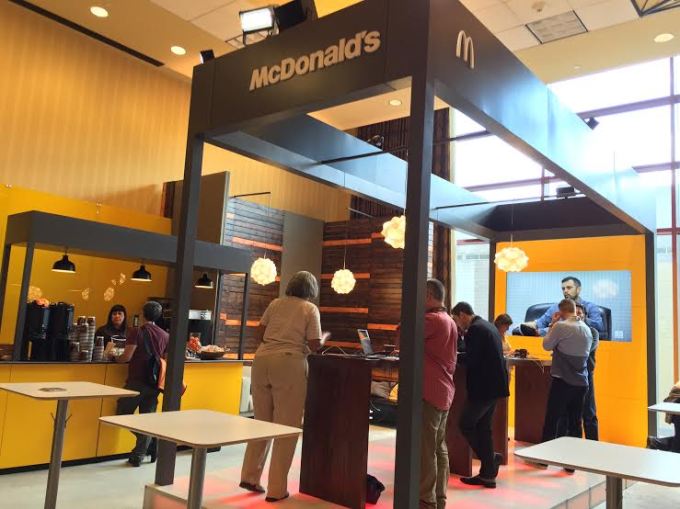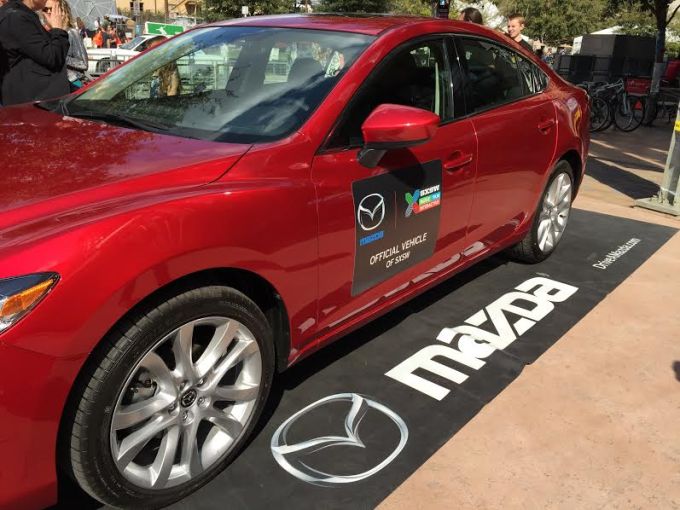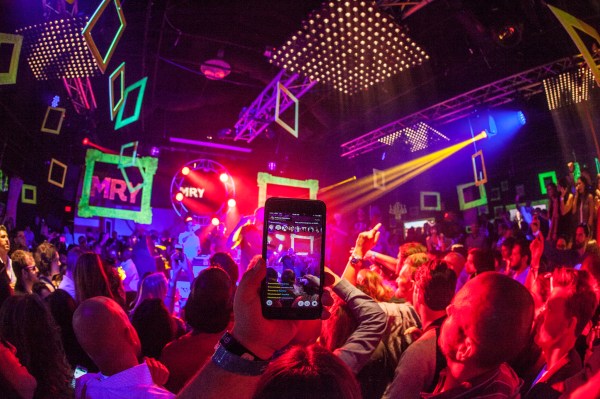If there’s any one thing that stands out at SXSW this year, it’s that it’s getting harder for even mainstream corporations to rise above the marketing din. What was once called “spring break for geeks” has slowly been taken over in the last couple of years by mainstream corporate sponsors.
But are those corporate sponsors getting what they’re paying for? If not, who is successfully getting through the noise, and, at what cost?
Corporate sponsors just add noise to the signal
Let’s take a look at McDonald’s as a case in point. McDonald’s, the most mainstream of mainstream brands has joined a growing list of “Super Sponsors” at the festival this year.
McDonald’s is offering free “wi-fry” Internet access to attendees and inviting them to check out their lounge, hidden on the 4th floor of the Hilton. In addition, McDonald’s street teams have been walking around and pouring hot coffee from backpacks.
McDonald’s has certainly spent its marketing dollars, but it’s not clear if any of that has had much of an impact. Several attendees couldn’t recall even seeing the golden arches anywhere downtown. “They’re a sponsor?,” one ticket holder asked. Others recalled seeing them on the list of brands plastered on SXSW marketing materials but had zero idea what else McDonald’s was doing at the conference. Even with all that marketing spend, the global fast-food juggernaut had a hard time standing out at SXSW.

The super-sized sponsorship is part of Steve Easterbrook’s, SXSW’s new CEO’s, strategy to appeal to, and eventually research, a crowd of “innovators” for tech ideas. McDonald’s leadership came to SXSW last year to see what it could learn from the early adopter crowd.
“We are not where we need to be when it comes to being seen as a digitally innovative company. Everyone expects two guys in a garage to come up with ideas. We want to be part of that flow of ideas,” McDonald’s senior vice president of digital, Atif Rafiq said.
While SXSW definitely feels more corporate this year, its leadership said it doesn’t have that many more sponsors, just bigger ones. Hundreds of corporations participate in some level of sponsorship at SXSW. Top-level sponsorship of the SXSW Music, Film and Interactive festivals overall is called “Super Sponsorship.” Hundreds of corporations participate in some level of sponsorship at SXSW. There are 10 “Super Sponsors” this year, compared to 8 in 2014. These sponsors are now shelling out even more than before.
“As SXSW grows and impressions increase, the value of sponsorship increases and as you might expect, so does the price to sponsor,” Scott McNearny, SXSW’s sponsor chief said. He didn’t reveal any actual numbers, though we asked.
SXSW is noisier than ever
Thanks to the new JW Marriott just a few blocks down from the convention center, there are about 25 percent more exhibitors and over 200 more sessions this year (up 20 percent from last year), adding to more than 6,000 total events. Meanwhile, attendance is about the same size as it was in 2014, according to SXSW organizers. SXSW doesn’t have the final figures for ticket holders just yet, but there were just over 32,000 attendees last year for Interactive.
What we have here is a continuation of an encroaching corporate America, more and bigger corporate sponsors, more marketing and more sessions adding up to more noise. The mad dash to engage all those eyeballs only adds to this.
Corporations feel the squeeze
SXSW started to pull in more mainstream corporate sponsors years ago. Now those corporate sponsors are playing musical chairs. McDonald’s replaced Subway as the food sponsor this year. Chevy has provided free rides to attendees for the last five years. It pulled out this year, and was promptly replaced by Mazda as the official car sponsor.
Chevy told us that it just had too many products to launch this year to go to SXSW, according to a spokesperson for the company. “It was a great partnership but with five products to launch in 2015 our business priorities have shifted. We wish them well on this year’s festivals,” the spokesperson said.
Read: Chevy considers SXSW too noisy to launch new products.

Still, other brands seem comfortable in the crowded space. Samsung showed up again with a prime venue right across from the convention center to showcase its new VR tech. It also provided fresh squeezed juice for free in the Samsung Blogger Lounge, which was a nice touch. But companies like Samsung have these kinds of budgets to spend on things like that.
Corporations just don’t understand
Is SXSW devaluing attendee experience by chasing these bigger corporate dollars? Tough to say. On the one hand, the bigger corporations provide an easier experience for many attendees. There’s more Wi-Fi and more outlets this year. Attendees can power up at the Samsung lounge or Fast Company or even by tweeting at a Mophie St. Bernard.
But no one’s mooning over McDonald’s presence. Even with the ginormous spend on marketing to become a “Super Sponsor” for the festival, it’s not the hottest thing on everyone’s lips. It’s not the “breakout app” of SXSW. It’s not Meerkat, an app built by one dude in eight weeks.
Not all startups get it, either
The funny thing is, we’ve seen this before. Twitter, Foursquare and GroupMe successfully launched years ago at the Interactive portion of the festival. But that all happened via organic promotion from users, not because of big marketing budgets.
But there were other startups, like Path and Foursquare, that used to spend big bucks and throw huge Interactive parties .
Foursquare was a SXSWi party staple, with lines out the door for an event that held real-life Foursquare games.
Meanwhile, this was the scene at Path’s SXSW party two years ago, an event where Jane’s Addiction played a set for seemingly everyone who was anyone in tech:
Neither of those SXSW startup stalwarts are doing anything this year, and it’s fair to ask whether their ultra-hyped SXSW parties actually led to any user adoption.
It turns out you can’t buy your way to success.
Plenty of startups have shown up on the streets of Austin this year, but they’re mostly using guerilla marketing tactics to capture people’s attention. The founder of on-demand marijuana app Flow Kana is walking around in a farmer dress and handing out organic apples. Book discovery platform Squirl deployed several adults dressed up as fury squirrels to go read books on street corners.
Here’s why Meerkat broke through
Meerkat launched just 16 days ago and, despite Twitter’s attempt to slow it down as it gears up for its own live streaming service Periscope, Meerkat said its user growth has nearly doubled in the last couple of days.
While those numbers are hard to verify, it’s climbing up in rank on App Annie and definitely on everyone’s lips at the festival. You can hear jokes being made while people wait in line that they are going to “meerkat” their wait. Jimmy Kimmel even jumped on board.
SXSWi attendees, social media nerds, big brands and celebrities are all hopping on the Meerkat train, without any kind of sponsorship or budget responsible.
So why is Meerkat a success when major corporations with giant budgets can’t seem to catch a break? Promotion from users is propelling the success, according to Meerkat co-founder Ben Rubin.
“It’s happening because the community is promoting it. We are not coming here and asking them to pay attention to us. They are active, the community is pushing us forward,” Rubin told TechCrunch.
The breakout hits of SXSWi all have a characteristic that major corporations don’t. They are organically shared by a community of social media-savvy early adopters. Most of those registered on SXSocial, SXSW’s cluttered attempt at a social media platform, list themselves as social media marketers. Sessions during the Interactive portion have a heavy social media and tech focus.
The heart of SXSW Interactive still beats to the weird drum of social media geeks and early adopter types, who like to share what they are doing with each other. Whether that’s Meerkatting, or McDonald’s.
